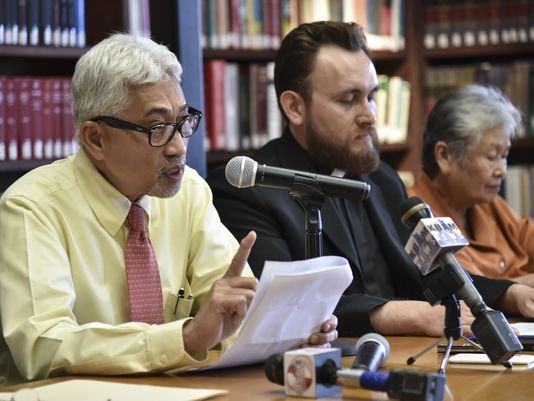The Elephant in the Room
By Ricardo B. Eusebio
Hans Christian Anderson wrote a tale about an emperor who was deceived by two weavers claiming they could weave clothes of magical quality. They become invisible to anyone stupid. When the fake robes were ready, the townspeople and ministers were afraid to say that the emperor was naked, including the emperor himself, for fear of being called stupid. One child exclaimed, “The emperor is naked!”, breaking the spell. This is apropos to our situation in Guam today where we are dealing with perceptions instead of facts. A bishop has been accused and deemed guilty without a trial. Anything associated to him (Neocatechumenal Way, seminary, Kamalen Karitat, Theological Institute) is guilty by default. Whoever questions this narrative is stupid. What is the truth? The Neocatechumenal Way is an itinerary of faith supported by five popes, who said, “it’s a gift of the Holy Spirit” — healing marriages, transmitting faith to youth and raising vocations. The Redemptoris Mater Seminary has ordained 17 priests: four are pastors and three are vicars in three parishes, including one serving in Saipan for Bishop Ryan. All are valued greatly and deemed assets. Guam imports priests from the Philippines because priestly vocations are scarce. Priests formed under RMS possess a missionary spirit but fall under the jurisdiction of the archbishop, who alone decides where they serve. In 2009 on the 10th anniversary of the RMS, the Legislature passed resolution 259-30, expressing gratitude “for their continuous contribution towards the improvement and betterment of the quality of life for our Island community and its people.” The Theological Institute solved the problem of a requisite educational institution of higher learning for the formation of priests in the Pacific, an area severely lacking priests. Thirty-one bishops supported the erection of the Institute in Guam, achieving affiliation with the Lateran University, the Pope’s university. Seminarians graduating from the Institute receive a bachelor’s degree from the Lateran University. Prior to the establishment of the Theological Institute, only Fiji and San Francisco were options. After the dismissal of the Sulpicians (who followed a very liberal education), Saint Patrick seminary was in disarray. Attempting to rebuild the faculty with a traditionalist agenda (utilizing Latin and cassocks), most dioceses withdrew their seminarians. Of 110 seminarians, only 35 remain, of which 16 are for San Francisco despite a minimum survival number of 70. Over the next two years, there will be no ordinations and perhaps in 2020 an ordination will occur, assuming it survives. From a financial perspective, the cost to form a seminarian/year in San Francisco is $44,000-$10,000 a year at RMS. The archdiocese contributes only 5 percent to this amount for RMS, or $500 a year. Therefore a 10-year formation for one RMS formed priest costs the archdiocese only $5,000 and for $44,000 a year could basically finance for almost nine priests! The complete formation of one seminarian in San Francisco will cost the archdiocese $440,000. Perhaps this should be considered before selling archdiocesan assets. If the issue is to sell off the Yona property to pay for the sexual abuses, the RMS formators informed the archbishop that they could move elsewhere. Archbishop Byrnes declined however, and proceeded to close the RMS seminary. A year ago, there were 44 men in formation but Byrnes sent most of them away. Last week he informed the remaining 10 to “look for another diocese” by Christmas, which includes four local Chamorros formed in Guam, ready to be ordained. Why destroy institutions that were praised to be beneficial to the community? In 1944, Guam experienced a deluge of bombs to be liberated from their Japanese captors. Today, another horrific spiritual bombardment is supposed to liberate us from a seminary and a theological institute? Will Guam prosper now that they have been decimated? This academic discussion will now forever lie in the ruins of history’s heap. Ultimately those responsible for this massacre will answer to a higher judge. Nonetheless, we have to ask our shepherd why this terrible hatred toward everything associated with Apuron? How can such a biased, one-sided policy promote reconciliation? Why so many poor decisions against diocesan interests despite instructions from Cardinal Filoni? Who sold you this magic garment?
|
.
Any original material on these pages is copyright © BishopAccountability.org 2004. Reproduce freely with attribution.
